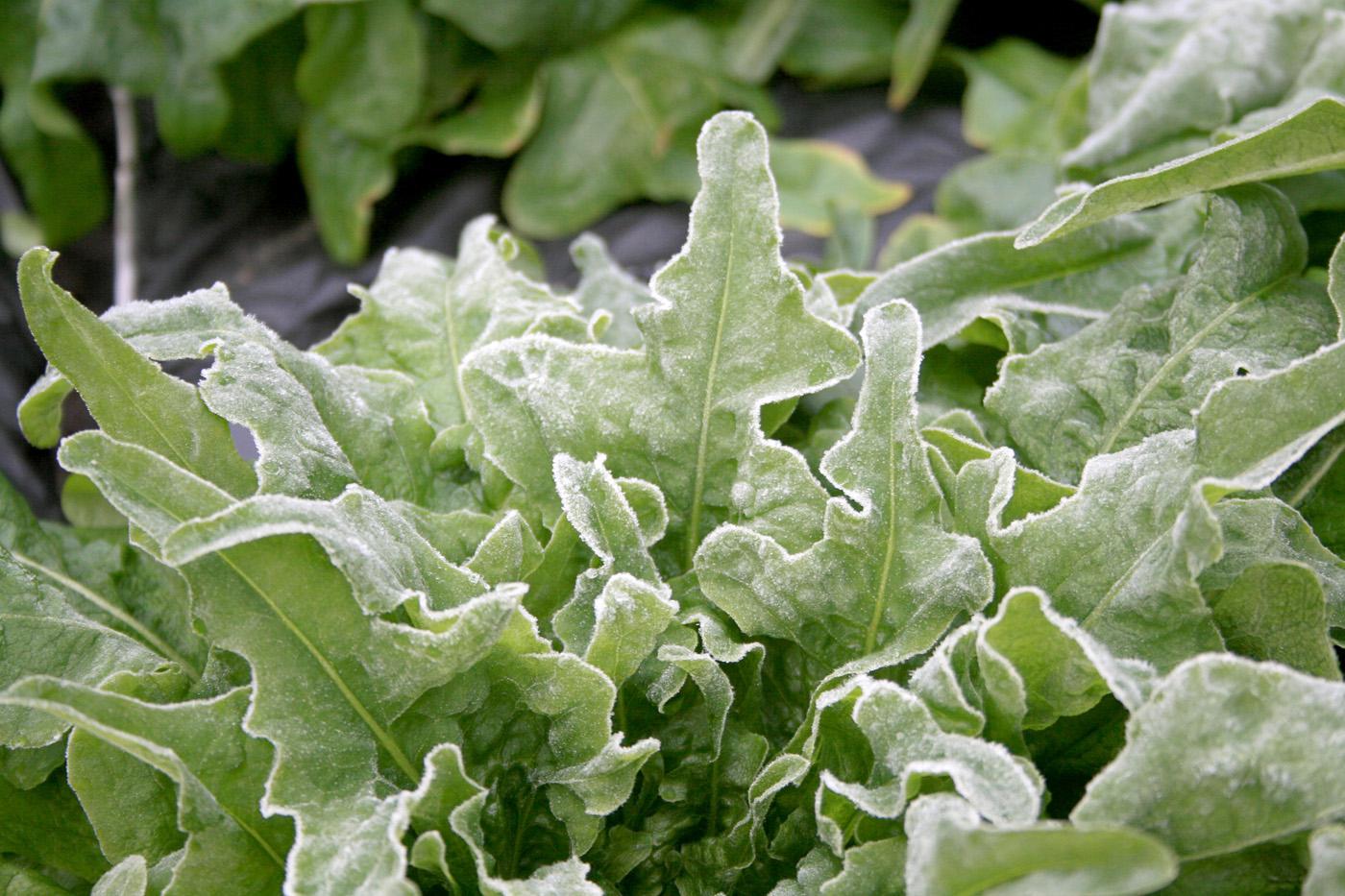Information Possibly Outdated
The information presented on this page was originally released on November 28, 2011. It may not be outdated, but please search our site for more current information. If you plan to quote or reference this information in a publication, please check with the Extension specialist or author before proceeding.
Winter's frost, freeze can damage landscape
I think my garden plants have enjoyed the cooler temps of autumn as much as I have enjoyed them. As the weather becomes colder, we need to think about protecting our garden plants.
Gardeners pay close attention to weather predictions of cold temperatures. We often use the terms “frost” and “freeze” interchangeably because both refer to cold temperature events. In reality, a frost and a freeze are completely different things.
Frosts rely on the amount of water in the air. Two commonly used terms describe the amount of water in the air. Relative humidity measures how much water is in the air compared to the maximum possible. Warm air holds more water than cold air does.
Dew point is the absolute amount of water in the air. The dew point is a constant for a given volume of air, regardless of variation in relative humidity. When the temperature drops low enough, the air becomes saturated and the excess water that the air cannot hold condenses onto surfaces as dew.
Frosts typically occur when the skies are clear and there is a calm wind. Heat absorbed by the soil and plants during the day is transferred, or radiated, to the air. Calm wind conditions allow the surface temperatures to drop below freezing, while higher elevations remain warmer.
If the surface temperature and dew point are both below freezing, ice crystals will form on the cool surfaces. Sometimes the air is too dry for ice crystals to form, but a frost event has still occurred.
A freeze occurs when the ambient outside air temperature falls below the freezing point of water -- 32 degrees -- long enough to cause potential plant damage. A hard freeze occurs with temperatures stay below 28 degrees for several hours.
Freezes typically happen when cold air moves into a region. Often significant winds and cloud cover are associated with a cold front moving into Mississippi from the north. Freezes also can occur during calm conditions when the temperature drops rapidly. But if there is little moisture in the air, temperatures below freezing will not produce frost.
Make sure your plants are well watered when cold temperatures are predicted. As water freezes, it releases heat, which helps insulate root systems during cold snaps. Also, maintain 2 to 3 inches of mulch around the base of your plants. The mulch conserves water and acts as an insulation blanket for the roots.
Plants in containers can be moved indoors or into a garage or sheltered area when cold temperatures threaten. If all you can do is place them on the patio up against your home, this, too, will provide some protection.
When a freeze is imminent, cover in-ground plants with plastic sheets, cloths, boxes or something similar. Ideally, the foliage should not touch the covering. Last year, I used quick hoops to cover vegetable crops and protect them from potential cold weather damage.
So when cold weather threatens your landscapes, be ready to act quickly to protect your plants from freezing temperatures.








